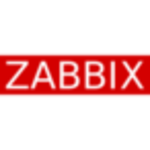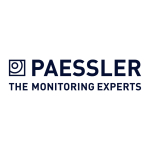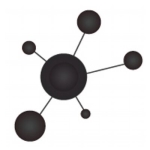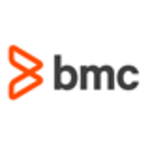What is our primary use case?
We primarily use it to monitor our clients' networks. We are also using it as a monitoring tool for some of the clients for whom we manage VMware clusters. We are utilizing Auvik log gathering and alerting. It is like a poor man's VMware monitoring tool.
How has it helped my organization?
Auvik's network map along with its dashboard gives us a real-time picture of our network. It is nice. I like how it changes. Based on how big your screen is, it expands to fill in the free space, and as it understands the environment better, it gives you a nice topology. You can see that this device is connected to that device through this port and everything else. It gives you a lot of information in a very clean, concise manner.
The network map does get cluttered if you have a very large environment and you are not tearing it down to smaller sites or smaller chunks. I know early on when we started using it, we would have clients who had MPLS connections, so we were scanning all seven sites in one Auvik site. It was definitely unwieldy because of the number of devices there. Once you get an idea of how you can search and filter, it gets a little bit easier. In our experience, it was better to start creating multiple sites and breaking out each of our clients' sites into a sub-site. Even then, some sites were quite large, so we had to delve into it. It can get messy, but it is something that we worked through.
It gives you full network visibility assuming that you are setting up your devices correctly because, with the bad data in, you are going to get bad data out. You need to get into all your switches, firewalls, and everything else and make sure that SNMP is configured correctly. You need to ensure that your logging is pointing to the right IP and that creds and other things are correct so that Auvik is able to ingest the data correctly. Auvik can then provide a good map of what it is seeing and where all your devices are. It is definitely not a quick and easy setup if you have a fairly large environment. If you have an environment where maybe you have never set up SNMP, there is a little bit of heavy onboarding, but once it is in and Auvik is collecting the data, it is a good product.
We could see its benefits within days of having all the environments configured correctly, sending logging data, and having SNMP configured correctly. Within days, Auvik was able to collect the data, connect to all the devices, and see how switches were connected back to the core and how the traffic flowed. We started getting good data and performance metrics on port speeds and things like that fairly quickly. It was pretty quick.
We are still rolling out access to the solution for different levels of our support team. Those who do have access to it have found it beneficial to be able to see the data that they would not normally have access to.
Auvik has helped to decrease our mean time to resolution. We are not tracking that per se, but for the few issues that came up, we went to Auvik to review performance metrics. That minimized the amount of time it took to resolve whatever we were looking at because we had the data given by Auvik. We were not blindly trying to figure out what was going on by using a device's features.
Auvik allows us to spend less time on the setup and maintenance of the solution and less time on issue resolution. For some of the clients that we have brought on and utilized Auvik with, there has been a little bit of onboarding. We had to go and change SNMP settings or just enable SNMP, community strings, etc. We had to repoint the syslog so that it is pointing to the Auvik collector. There has been onboarding time there, but in the long run, because of the data that we get out of Auvik, it reduces the amount of time it takes to look into issues. So, there is a wash and probably a net positive, where we take less time to deal with issues because of Auvik than the time it took us to get it set up.
What is most valuable?
I love the ability to remote into network gear such as switches and firewalls directly from the Auvik dashboard. We do not have to get into a jump box or VPN to a client. We can get a nice, secure terminal session straight to any network that we are monitoring and managing through Auvik. I can access that directly from the Auvik dashboard. That is probably one of the biggest benefits since we got it. It saves time. We do not have to look up passwords for a random jump box in a client's environment.
What needs improvement?
Most of the past frustrations have either been resolved or were more about how I was trying to figure things out. They were not necessarily an Auvik problem. I have been pretty happy with the usage. I have not come across a pain point that was a deal breaker.
They can maybe provide some more best practices or guidance around how large a network should be. They can provide some cutoff points, such as, if you have 30 network devices, you might want to chunk that into a smaller subset or site. They can help you better plan and design how to create your Auvik sites, especially if you have a large environment. Most of our client environments are less than a dozen devices, but we have come across a few where they have had 60 switches. It has been interesting dealing with so many devices and seeing all the data that Auvik can provide with so many devices in one single pane.
For how long have I used the solution?
It has been about a year since I have been exposed to it, or maybe a little bit longer.
What do I think about the stability of the solution?
I have never experienced any lagging or crashing with the product. With the amount of updates and the communication that they have about when they are doing updates or when they are having issues, it has been easy. Everything is well communicated. They do a good job with it. I have not experienced the product crashing on me or something like that.
What do I think about the scalability of the solution?
The scalability is pretty good because right now, we have maybe 40 or 50 base sites in our environment. A lot of those base sites are multisite sites. We probably have 60 to 70 total sites that we are managing through Auvik. There have been no slowdowns or hiccups. Everything has been good.
How are customer service and support?
I have contacted their support. There was a problem trying to get a device recognized in the dashboard or send data to the dashboard. It might have been a networking issue, not necessarily an Auvik issue, but they were helpful from what I remember.
The quality of their support was good. It was not necessarily a system-down type of scenario. It was not a high-priority ticket that I put in, but from memory, they responded in an adequate amount of time to the question I was posing. For the scenario, their support was good.
How would you rate customer service and support?
Which solution did I use previously and why did I switch?
I have not used any similar solution. The closest thing I have used would be Meraki, but that is Meraki-centric. It is not something that you can use with anything. That would probably be the closest thing to the single pane of glass and seeing how everything is interconnected. It is a hard comparison because the Meraki dashboard is made for Meraki software. I like Auvik a little bit better just because it does not necessarily matter which network equipment is there. With Auvik, we are utilizing clients that have multiple kinds of network hardware such as Aruba, FortiGate, Cisco, etc. They have anything and everything. Auvik has been very good at giving us that guidance into what is going on in the environment.
How was the initial setup?
It is cloud-based with on-prem collectors at all of the different client sites. There is usually a service installed on a virtual machine somewhere unless we have a physical management device in their environment, and then we put the collector on that. Aside from the collectors in the actual environment, the service is cloud-based.
Its initial deployment was easy. There is obviously a learning curve when you get new software. It took us a while to understand all the features and abilities that Auvik provides, but the initial standing up of the site, getting the collector spun up, and adding network devices was pretty quick. It probably took thirty minutes.
The implementation took a couple of days the first time. Now, when we bring on new clients, the time depends on how large an environment is, how many switches and other devices are there, and whether they have already configured SNMP across the LAN. On average, a normal new client takes 8 to 16 hours to stand up, set up the Auvik sites, get collectors posted, and start ingesting data after setting up all the settings on the switches to point to the collector. It is a decent amount of time. It is not too much, but it is not necessarily super quick.
What about the implementation team?
We did it all in-house. A few technical people from Auvik assisted us, but I do not believe we pulled a third party in on it.
For a new client that we bring on, it is usually a one-person job. We assign a tech, and they get it going. It is simple enough that a single engineer can handle it unless you are organized a little differently, and then I could potentially see multiple people being required. Generally, a single person who understands Auvik management and dashboard has basic networking skills, can go in and change SNMP settings, and set up logging can easily handle it on his or her own.
What's my experience with pricing, setup cost, and licensing?
For us, it has been good. I do not get too much into the pricing side. We are an MSP, so we have a number of clients, and we are utilizing Auvik as a way for us to be able to better manage and support our clients. The more clients we bring into Auvik, the better the pricing, so we have been happy with how it is.
There are critical devices in our network that are monitored by Auvik at no charge. That is why we have been using Auvik for some of our VMware cluster management clients. We can add VMware servers to the Auvik dashboard and get basic monitoring and up/down alerting by utilizing Auvik, but we do not pay for them because they are not network devices. That has been a nice additional feature. We have way more network devices that we are monitoring, but being able to add those in and not having to worry about additional costs has been nice.
What other advice do I have?
The data you get out of Auvik is only as good as the data you put into it. So, you need to make sure that you are scanning the subnets that you need to scan. Ensure that you are scanning everything in your environment, you have all your devices configured for SNMP, and you have syslog set correctly out the gate. That will set you up for the best usage of the product and get the best data out of it.
It is pretty good in terms of ease of use. Over the last year or so that we have used it, it has improved here and there, not drastically, but in terms of little annoyances that I cannot even think of right now. It is definitely easy to understand once you go through basic training for how the dashboard is laid out.
I would rate Auvik Network Management a solid nine out of ten.
Disclosure: PeerSpot contacted the reviewer to collect the review and to validate authenticity. The reviewer was referred by the vendor, but the review is not subject to editing or approval by the vendor.






















